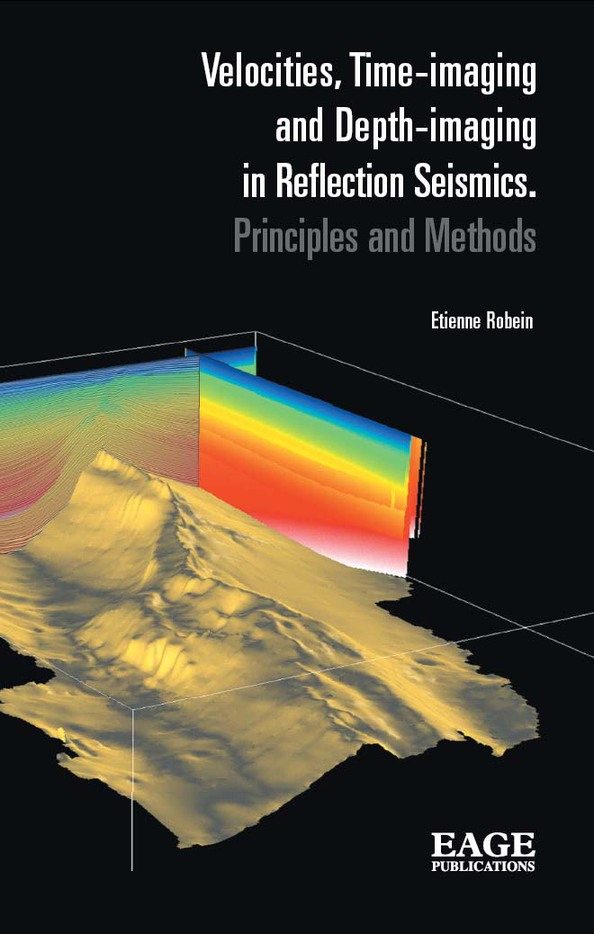- Home
- Books
e-Books
All EAGE book titles are available in the Epub format. For reading Epub there are all kinds of e-readers available. See this link for Windows or this link for Mac for good advice on what e-reader to choose.
Please be aware that EAGE no longer sells print book copies and that e-books cannot be returned to the EAGE Bookshop.
41 - 42 of 42 results
Filter by Publisher:
- European Association of Geoscientists & Engineers [42] http://purl.org/dc/terms/isPartOf http://instance.metastore.ingenta.com/content/eage
Filter by Year:
- 2023 [1] http://pub2web.metastore.ingenta.com/ns/yearOfPublication 2023
- 2020 [2] http://pub2web.metastore.ingenta.com/ns/yearOfPublication 2020
- 2019 [1] http://pub2web.metastore.ingenta.com/ns/yearOfPublication 2019
- 2018 [4] http://pub2web.metastore.ingenta.com/ns/yearOfPublication 2018
- 2016 [1] http://pub2web.metastore.ingenta.com/ns/yearOfPublication 2016
- 2015 [3] http://pub2web.metastore.ingenta.com/ns/yearOfPublication 2015
- 2014 [7] http://pub2web.metastore.ingenta.com/ns/yearOfPublication 2014
- 2013 [4] http://pub2web.metastore.ingenta.com/ns/yearOfPublication 2013
- 2012 [3] http://pub2web.metastore.ingenta.com/ns/yearOfPublication 2012
- 2011 [2] http://pub2web.metastore.ingenta.com/ns/yearOfPublication 2011
- 2010 [7] http://pub2web.metastore.ingenta.com/ns/yearOfPublication 2010
- 2009 [1] http://pub2web.metastore.ingenta.com/ns/yearOfPublication 2009
- 2008 [3] http://pub2web.metastore.ingenta.com/ns/yearOfPublication 2008
- 2007 [3] http://pub2web.metastore.ingenta.com/ns/yearOfPublication 2007
- More Hide
-
-
Seismic Stratigraphy and Depositional Facies Models
Authors P.C.H. Veeken and B. van MoerkerkenLanguage: EnglishPublication Date: January 2013More LessSeismic stratigraphic techniques are nowadays part of the standard routine for interpreting seismic datasets and it is a fundamental tool for the E and P business. Its added value has been demonstrated over the past few decennia by an impressive proven track record in green field hydrocarbon exploration. Refinement and more diligent processing techniques (e.g., PrSDM, multi-focusing, full wavefield processing) necessitate a systematic approach towards 3D seismic interpretation. Seismic stratigraphy represents a coherent method for the analysis of sedimentary basin fills. The change in scale of observation, from individual outcrops to the regional framework, has been an eye-opener to many geoscientists. The results of seismic stratigraphic analysis form solid input for integrated quantitative subsurface reservoir studies. Better reservoir management decisions are made possible, when the reservoir characterisation approach is combined with 4D monitoring of the hydrocarbon exploitation and a feedback loop is adopted in the evaluations. Optimisation of the production in existing fields augments the ultimate recovery rate and this has a significant impact on the revenues generated from proven reserves. The seismic method improves the accuracy of subsurface forecasts and in consequence reservoir simulations are better matched to the observed production history. Seismic stratigraphy provides prediction details to shared earth model that were not available before. The benefits are documented by many case histories worldwide.
The textbook summarizes basic seismic interpretation techniques for sedimentary basin fills. A basic overview of seismic processing techniques is presented. The benefits of integrated reservoir studies for hydrocarbon exploration are demonstrated. These study techniques also apply to other geoscience domains like: mineral exploration, archaeology, environmental studies, C02 sequestration. Topics are presented from a practical point of view with abundant illustrations to support various case histories. The reader (students as well as professional geophysicists, geologists and reservoir engineers) is taken from an introductory to a more advanced study level. A wide range of interpretation issues are covered, all the way from 2D to 3D and even 4D with a multi-component approach. The link with sedimentology and depositional facies models is made. Some aspects of seismic sequence stratigraphy and structural deformation basin analysis are presented, but these topics will be described in more detail in the next volume of the series.
-
-
-
Velocities, Time-imaging and Depth-imaging: Principles and Methods
Language: EnglishPublication Date: January 2010More LessThere are numerous textbooks and publications on seismic processing, and in particular migration. However, we do not know of any work giving an overview of the many types of 'velocities' used in Seismics and how they relate to the different methods involved in the creation of the seismic image.
This text reviews the imaging methods used in the oil and gas industry today, with a unique emphasis on this relationship between imaging and velocity. It addresses imaging in both time and depth domains, spanning the range of complexity from NMO correction to sophisticated pre-stack migrations. Recent tools, such as inversion and demigration, and new directions, e.g. accounting for anisotropy have also been tackled. The work is comprehensively illustrated with a total of more than 200 figures.
The book should therefore be of interest to students looking for a complete introduction to seismic imaging techniques and their respective theoretical and practical merits and limitations. It is equally written to serve as a reference book for industry professionals, both generalists and specialists, who wish to revise standard techniques or take a look at some of the newer developments. In particular, interpreters, who participate in more and more tasks involving seismic velocities, will find answers to many of the questions which arise when, for example, tying seismic images to wells, creating post- and pre-stack time migration velocity fields, building a velocity model for depth migration or simply converting maps from time to depth.
The book is divided into four major sections:
Chapters 1-3 are dedicated to the fundamental concepts that lie behind elastic wave propagation within the subsurface, the velocity of such propagation, and the seismic imaging process itself. They should be considered as a (long!) introduction and most of the concepts will be used subsequently.
Chapters 4-6 outline the specific imaging principles: NMO, DMO, stack and post-stack migrations. In these chapters important ideas such as ‘migration in time’ and ‘migration in depth’ are presented. We also aim to clarify the relationship between velocity and migration, going on to show how improved velocity information leads to better seismic imaging, which in turn allows a better estimation of subsurface propagation velocities.
Chapter 7 generalizes the migration concepts from ‘post-stack’ to ‘prestack’ in both the time domain and the depth domain.
Chapter 8 recapitulates practical issues in estimating depth from the seismic image and the seismic velocity, and matching these with borehole data.
-



